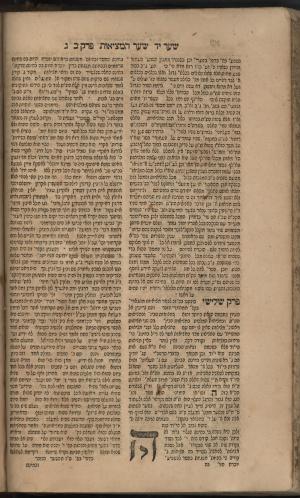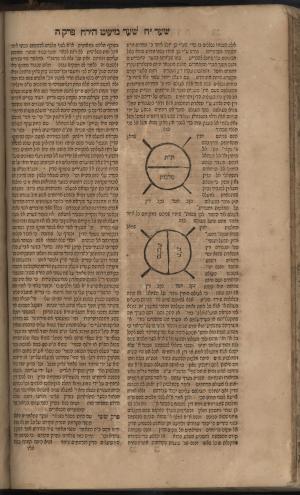Obj. ID: 39282
Jewish printed books Pardes Rimmonim, Korets (Korzec), 1786

This text was prepared by William Gross:
Cordevero (1522-1570), a disciple of Yosef Caro, was the outstanding Kabbalist of Safed in the Holy Land in the generation before the greatest of the sixteen-century Kabbalists, Yitzhak Luria, who was his pupil. Completed by Cordovero before he was twenty-seven, it organizes the large corpus of Kabbalistic literature comprehensively and systematically.
The world of the Kabbalah, a development of Jewish mysticism, apparently originated in Spain in the 12th century. It was the provenance of a relatively small but highly learned group of scholars in all generations. The advent of printing brought the publication of the Kabbalistic texts as well in the 16th century, some with illustrations which demonstrated Kaballistic theories and ideas. This is the fifth edition of Cordevero's work and uses the illustrations from the 1592 Cracow edition, the first Hebrew book to present the diagram of the ten Sephirot [spheres], a visual presentation of a very basic idea of the Kabbalah. This book is one of the fundamental texts of the Kabbalah by an author considered even today as one of the most important Kabbalistic thinkers.
This edition, printed in the small town of Korzec in the Ukraine, is typical of the many kabbalistic and Hassidic works turned there during the last quarter of the eighteenth century. Between 1766 and 1819 there were four Hebrew printing presses in Korzec, some of them associated with those in Shklov, Nowy Dwór, and Ostrog. They printed nearly 100 books, mostly works of kabbalah and chasidism, which contributed considerably to the spread of Hasidism in Poland and adjoining countries. Works by Jacob Joseph of Polonnoye and Dov Baer of Mezhirech were first printed there. Korzec was a center of Hasidism. Dov Baer the maggid of Mezhirech and Phinehas Shapiro were active there.





















